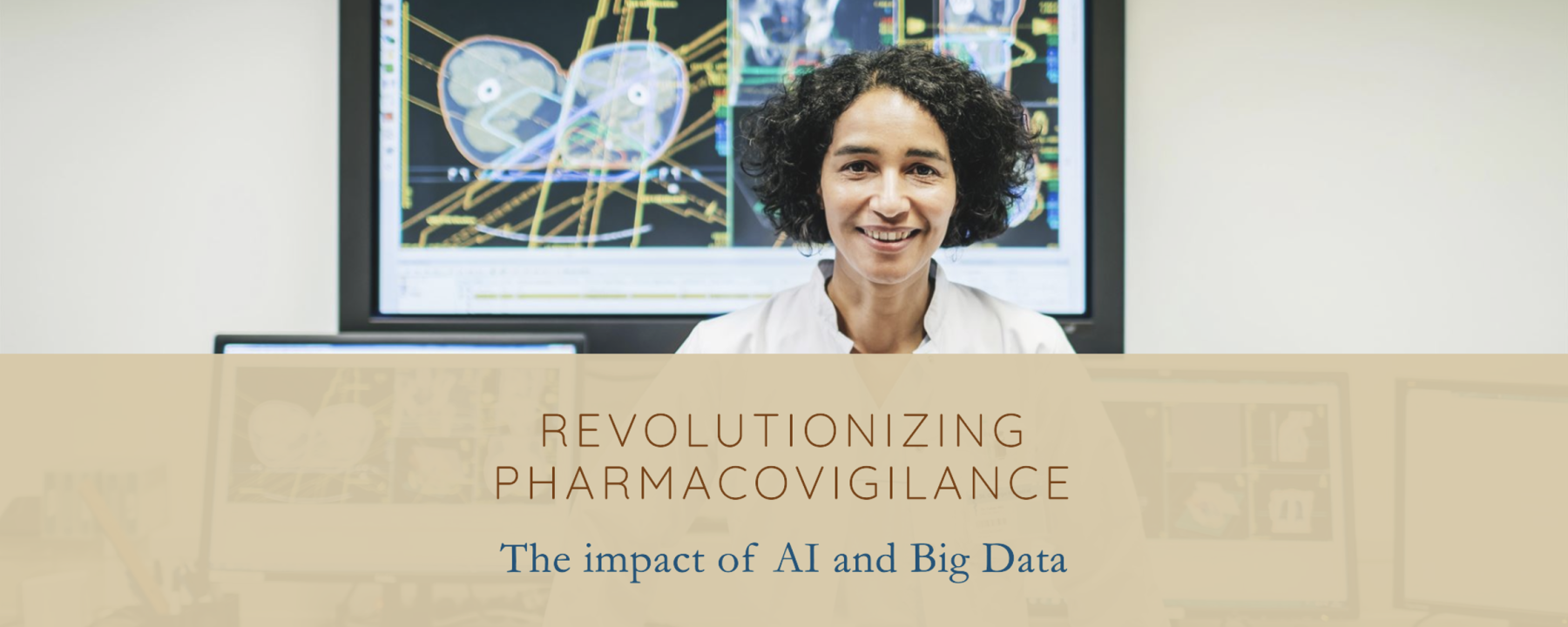
How AI and Big Data Are Revolutionizing Pharmacovigilance?
Introduction
In the rapidly evolving pharmaceutical landscape, pharmacovigilance (PV) plays a crucial role in ensuring drug safety and efficacy throughout a drug's lifecycle. With the increasing complexity of drug development and monitoring, traditional pharmacovigilance methods often fall short in managing vast amounts of data, resulting in potential gaps in drug safety surveillance. Enter artificial intelligence (AI) and big data—technologies that are not only transforming how data is analyzed and interpreted but are also revolutionizing the entire pharmacovigilance process. These advancements are enabling faster, more accurate, and more scalable solutions to complex safety concerns.
Pharmacovigilance is concerned with detecting, assessing, understanding, and preventing adverse drug reactions (ADRs) and other drug-related problems. With the growing volume and diversity of global data sources, the integration of AI and big data into PV operations offers new possibilities. These technologies can process massive datasets from various sources, such as electronic health records (EHRs), patient feedback, social media, clinical trials, and more, thereby identifying potential risks earlier and with higher precision. They also enable the automation of time-consuming tasks, reduce human error, and provide insights that might otherwise remain undetected using traditional methods.
In regions like Mexico, Brazil, and LATAM, pharmacovigilance has become a critical aspect of public health management, especially in light of the challenges posed by growing populations, increasing healthcare access, and diverse genetic backgrounds. With the integration of AI and big data, local and international stakeholders can work together more efficiently to monitor drug safety, identify trends in adverse events, and ensure that regulatory standards are met.
In this article, we explore how AI and big data are reshaping the pharmacovigilance landscape, highlighting their impact in Mexico, Brazil, and other LATAM regions. Additionally, we discuss the comprehensive services offered by PRO PHARMA RESEARCH ORGANIZATION, which include Adverse Event Monitoring, Signal Detection and Evaluation, Risk Assessment, Regulatory Compliance, and Pharmacovigilance Training and Consulting. These services are designed to help pharmaceutical companies and healthcare organizations stay ahead of the curve, ensuring safety and compliance in an increasingly data-driven world.

The Role of AI and Big Data in Pharmacovigilance
1. Adverse Event Monitoring
Monitoring adverse events (AEs) is one of the most critical aspects of pharmacovigilance. Traditional methods rely on manual data entry and analysis, which are prone to errors and delays. AI-powered systems can:
- Automate the collection and classification of AE reports from multiple sources, including social media, electronic health records (EHRs), and patient feedback.
- Analyze unstructured data using natural language processing (NLP).
Example: AI algorithms have been used to identify previously unnoticed adverse reactions to widely used drugs by analyzing millions of social media posts and online reviews.
2. Signal Detection and Evaluation
Big data analytics facilitates the early detection of safety signals, enabling quicker interventions. By processing massive datasets, AI can:
- Identify patterns and correlations that might indicate potential risks.
- Prioritize signals based on their severity and likelihood.
Example: During the COVID-19 pandemic, AI-driven signal detection systems rapidly identified adverse reactions associated with vaccines, allowing for timely risk mitigation strategies.
3. Risk Assessment
AI and big data enable comprehensive risk assessment by integrating diverse datasets, such as genetic information, patient demographics, and drug interaction data. These technologies can:
- Predict patient subgroups at higher risk of adverse reactions.
- Simulate potential outcomes under different scenarios.
Example: A biopharmaceutical company used machine learning to predict rare side effects in a specific population, significantly reducing the risk for patients in clinical trials.
4. Regulatory Compliance
Compliance with regulatory requirements is essential for pharmaceutical companies. AI-driven platforms help streamline compliance by:
- Automating report generation for health authorities.
- Ensuring real-time monitoring of regulatory changes across different regions.
Example: AI tools have been deployed to monitor evolving pharmacovigilance regulations in regions like LATAM, ensuring timely updates and compliance.
5. Pharmacovigilance Training and Consulting
AI and big data also enhance training programs for pharmacovigilance professionals. Virtual simulations and predictive models can:
- Offer realistic case studies for training.
- Provide insights into emerging trends and technologies.
Impact in Mexico, Brazil, and LATAM
Pharmacovigilance for Bio-pharma in Mexico, Brazil, and LATAM has witnessed significant advancements with AI and big data integration. These regions often face challenges such as resource constraints and fragmented healthcare systems. By leveraging these technologies, organizations can:
- Improve data quality and accessibility.
- Enhance collaboration among stakeholders.
- Address region-specific safety concerns effectively.
Example: In Brazil, AI-enabled tools have been used to analyze electronic health records for adverse drug reactions, leading to better post-market surveillance.
Our Services at PRO PHARMA RESEARCH ORGANIZATION
At PRO PHARMA RESEARCH ORGANIZATION, we offer comprehensive pharmacovigilance services tailored to the needs of our clients:
- Adverse Event Monitoring: Efficient tracking and management of adverse events.
- Signal Detection and Evaluation: Cutting-edge tools to identify and assess safety signals.
- Risk Assessment: In-depth analyses to predict and mitigate potential risks.
- Regulatory Compliance: Ensuring adherence to international and regional regulations.
- Pharmacovigilance Training and Consulting: Expert-led programs to keep your team ahead of the curve.
Conclusion
The integration of AI and big data is not just enhancing pharmacovigilance; it is redefining its scope and efficiency. From adverse event monitoring to regulatory compliance, these technologies empower stakeholders with actionable insights and real-time data. As the pharmaceutical industry continues to embrace digital transformation, regions like Mexico, Brazil, and LATAM stand to benefit immensely from these advancements.
For more information and to access our services of pharmacovigilance, contact us today. Let PRO PHARMA RESEARCH ORGANIZATION help you navigate the future of pharmacovigilance.